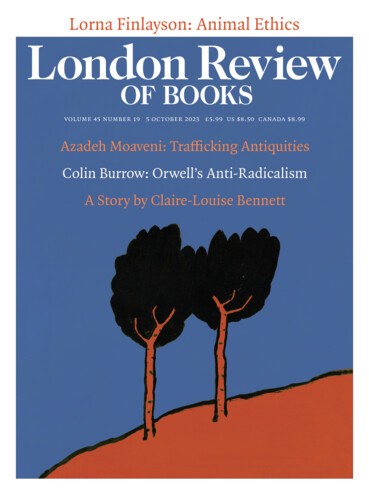Because each year of your life amounts
to less of your life
than the year before, the things in it change you less.
Horse chestnuts, for example,
beside you in the almost-
ready-for-morning frosted grass
as you walk to your car, or
one horse chestnut in particular,
its dry spiked ball on a flail
from your last game of Dungeons & Dragons.
What would you maul?
Who will you defend?
Its water-processed flour makes
a regional famine food.
It may be used to send a code,
a kind of cuneiform
rolled on a page across dirt. It may be burnt
but will not keep you warm.
Speckled, bruised, unopened, dried out enough
so that its ends proceed
to hold its core above ground, it has already lost
its spectacular, armour-piercing, collective need.
It wants to return
to its original edition, or evolution,
when it could have more give, or more to give,
its smooth combination
of barbs and
hooks enough to guard a single seed.
Send Letters To:
The Editor
London Review of Books,
28 Little Russell Street
London, WC1A 2HN
letters@lrb.co.uk
Please include name, address, and a telephone number.

